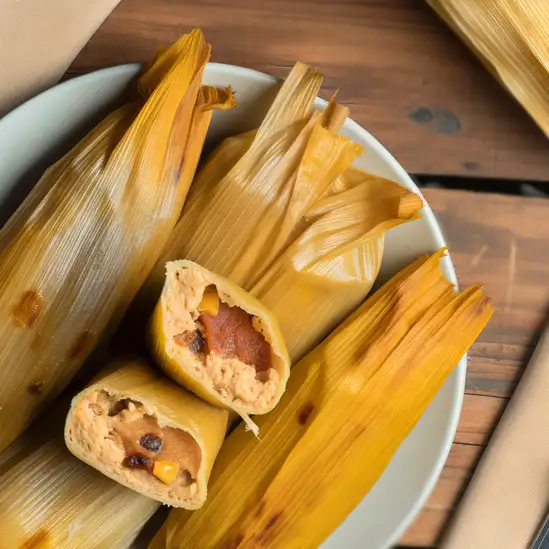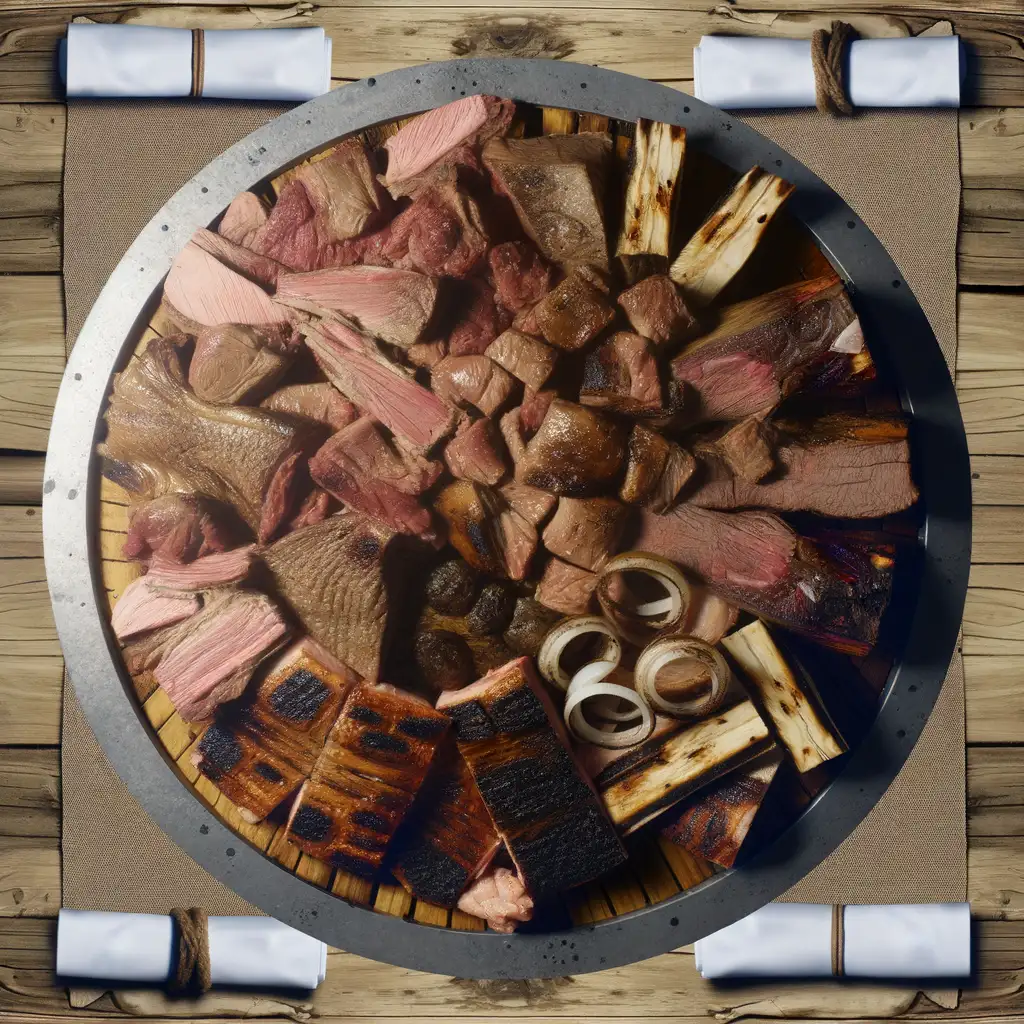



If you find yourself wandering through northern Argentina,San Miguel de Tucumán is a city that wraps you in warmth the moment you arrive. It’s got this lively,unpretentious energy—like a place where history and everyday life dance together in the sun-dappled plazas. The air carries the faint scent of freshly baked empanadas mingling with the earthy aroma of jacaranda trees in bloom,especially in spring. Walking through its streets,you’ll hear the hum of locals chatting animatedly over mate,the clinking of café cups,and the distant strum of a guitar from a nearby bar. What really makes Tucumán stand out is its rich history and vibrant culture. It’s the city where Argentina’s independence was declared,and you can feel that pride in the grand colonial architecture and the stories locals share with a sparkle in their eyes. The Mercado del Norte is a sensory feast—colorful stalls bursting with tropical fruits,spices,and handmade crafts. Grab a slice of humita or a cup of thick,sweet dulce de leche and savor the flavors that tell the story of the region. But beyond the history and food,it’s the people who make Tucumán unforgettable. They’re warm,welcoming,and full of life,always ready to invite you into their world with a smile. Whether you’re sipping a cold cerveza in a bustling plaza or wandering through leafy parks,there’s a genuine,heartfelt vibe here that makes you want to stay just a little longer.
The information on this page is currently being reviewed by Tripkliq and should be used as a guide only
Eng word: Hello
Eng pronunciation: OH-lah
Local language: Hola
Eng word: Goodbye
Eng pronunciation: ah-DYOS
Local language: Adiós
Eng word: Thank you
Eng pronunciation: GRAH-syahs
Local language: Gracias
Eng word: How much
Eng pronunciation: KWAN-toh KWEH-stah
Local language: ¿Cuánto cuesta?
Eng word: Toilet
Eng pronunciation: BAH-nyoh
Local language: Baño
Eng word: Help me
Eng pronunciation: ah-YOO-dah-meh
Local language: Ayúdame
Eng word: Yes
Eng pronunciation: SEE
Local language: Sí
Eng word: No
Eng pronunciation: NO
Local language: No
Eng word: Excuse me
Eng pronunciation: pehr-DOHN
Local language: Perdón
San Miguel de Tucumán was founded on May 31,1565, by Spanish conquistador Diego de Villarroel. Originally located in Ibatín, it was later moved to its current location in 1685 to avoid flooding and improve access to resources.
San Miguel de Tucumán is famously known as the 'Cradle of Independence' because it was here, in the Casa Histórica de Tucumán, that Argentina declared its independence from Spain on July 9,1816.
The Casa Histórica de Tucumán, where the Declaration of Independence was signed, is one of the most visited landmarks in the city. It has been preserved as a museum and is a symbol of national pride.
In 1685, San Miguel de Tucumán was relocated from its original site in Ibatín to its current location. This move was made to ensure better access to water and fertile land, which contributed to the city's growth.
During the 19th century, San Miguel de Tucumán became a major hub for Argentina's sugar industry. The fertile lands and favorable climate made it an ideal location for sugarcane cultivation, boosting the city's economy.
Founded in 1914, the National University of Tucumán is one of the most prestigious educational institutions in Argentina. It has played a significant role in the cultural and intellectual development of the region.
The Cathedral of San Miguel de Tucumán, built in the 19th century, is a stunning example of neoclassical architecture. It is a must-visit for tourists interested in history and religious art.
San Miguel de Tucumán is considered a cultural hub for Argentine folk music. The city has a rich tradition of music and dance, which is celebrated in festivals and performances throughout the year.
Parque 9 de Julio is the largest urban park in Tucumán and a popular spot for locals and tourists alike. It was named in honor of Argentina's Independence Day and features beautiful gardens, monuments, and recreational areas.
In San Miguel de Tucumán, the most common Power Adaptor is Type C, Type I.



Corn dough filled with meat or other fillings, wrapped in corn husks and steamed, these are a popular traditional dish in the region.

A traditional Argentine barbecue featuring various cuts of meat, often cooked on a grill or open fire, and served with chimichurri sauce.

A hearty stew made with corn, beans, potatoes, and various meats, often enjoyed during national holidays and celebrations.

A sweet caramel-like spread made from slowly heating sweetened milk, commonly used in desserts and pastries throughout the region.

A grilled provolone cheese dish, often seasoned with oregano and served as an appetizer, showcasing the region's love for cheese.


A dish made from a mixture of corn, cheese, and spices, wrapped in corn husks and steamed, offering a sweet and savory flavor.
Buenos Aires feels like a city that’s alive in every sense — vibrant,passionate,and endlessly inviting. From the moment you step onto its bustling streets,you’re wrapped in a mix of old-world charm and modern energy. The air carries the scent of freshly baked medialunas mingling with the faint,smoky aroma of asado grilling nearby. You’ll hear the rhythmic clatter of tango dancers’ heels on cobblestones,blending with the lively chatter spilling out of cafés and the distant hum of street musicians playing soulful melodies.
Walking through neighborhoods like San Telmo or Palermo,you’ll notice the colorful murals that tell stories of the city’s rich history and rebellious spirit. The architecture is a fascinating patchwork — elegant French-style buildings stand shoulder to shoulder with vibrant street art and quirky boutiques. There’s a warmth in the way porteños (locals) greet each other,a genuine friendliness that makes you feel like you’re part of the city’s ongoing story.
And then there’s the food — oh,the food! Juicy,perfectly grilled steaks paired with Malbec that tastes like it was made just for you. Empanadas bursting with flavor,and dulce de leche desserts that melt in your mouth. Buenos Aires isn’t just a place to visit; it’s a place to savor,to dance,to lose yourself in the rhythm of life. Trust me,once you’ve wandered its streets and soaked in its spirit,you’ll carry a piece of Buenos Aires with you long after you leave.
If you ever find yourself craving a place where nature’s grandeur meets cozy,small-town charm,San Carlos de Bariloche is where you want to be. Imagine waking up to the crisp,pine-scented air,with the shimmering waters of Lake Nahuel Huapi stretching out before you,framed by snow-capped Andes peaks. The vibe here is relaxed but alive—locals and travelers alike gather in rustic cafés,their laughter mingling with the clinking of coffee cups and the rich aroma of freshly brewed Argentine espresso.
Walking through Bariloche’s streets feels like stepping into a storybook. Wooden chalets with colorful shutters line the avenues,and the scent of chocolate wafts from every corner,a nod to the city’s famous artisanal chocolatiers. You’ll hear the soft crunch of snow underfoot in winter or the gentle rustle of leaves in summer,while the distant call of birds adds a natural soundtrack to your explorations. The city pulses with a blend of European alpine influences and Patagonian spirit,creating a unique cultural tapestry that’s both warm and inviting.
What really makes Bariloche unforgettable is how it invites you to slow down and savor the moment. Whether you’re hiking through ancient forests,savoring a plate of fresh trout by the lake,or simply watching the sunset paint the mountains in shades of pink and gold,there’s a deep sense of peace here. It’s a place that stays with you long after you leave,whispering stories of wild beauty and heartfelt hospitality.
Imagine stepping into a place where the wildness of nature meets the warmth of a close-knit community—that’s Ushuaia for you. Nestled at the very tip of South America,this city feels like the edge of the world,with snow-capped mountains standing guard over the deep blue waters of the Beagle Channel. The air is crisp and fresh,carrying hints of pine and salty sea spray,and when you walk along the harbor,you can almost hear the distant call of sea lions mingling with the chatter of locals and travelers alike.
Ushuaia’s charm isn’t just in its dramatic landscapes but in its spirit. The streets hum with a quiet energy—cozy cafés filled with the rich aroma of freshly brewed coffee,small artisan shops showcasing handmade woolen goods,and restaurants where you can savor Patagonian lamb or freshly caught king crab,each bite bursting with the rugged flavors of the region. There’s a ruggedness here,sure,but also a surprising softness in the smiles of the people who’ve carved out a life in this remote corner.
What really stays with you is the sense of adventure that pulses through the city. Whether you’re gearing up for a trek through Tierra del Fuego National Park,hopping on a boat to spot penguins,or simply watching the sunset paint the sky in fiery hues,Ushuaia invites you to slow down and soak it all in. It’s a place that feels alive,raw,and deeply welcoming—like a story you’re eager to be part of.
If you ever find yourself craving a place where nature’s raw power meets a laid-back,friendly vibe,Puerto Iguazú is where you want to be. The moment you step into this small town,there’s a hum in the air—a mix of tropical birdsong,the distant roar of waterfalls,and the chatter of locals who seem genuinely happy to share their corner of the world. It’s not just a gateway to the famous Iguazú Falls; it’s a place that wraps you in warmth,both from the sun and the people.
Walking through the streets,you’ll catch the scent of fresh yerba mate brewing in cozy cafés,mingling with the earthy aroma of rain-soaked jungle nearby. The colorful markets burst with handcrafted goods and the sweet tang of tropical fruits,inviting you to slow down and savor the moment. At night,the town softens into a gentle rhythm—music spills from open windows,and the air carries the faint spice of grilled meats from local parrillas.
What makes Puerto Iguazú truly special is its blend of cultures—Argentine,Guaraní,and a touch of Brazilian influence—that colors everything from the food to the festivals. It’s a place where adventure and relaxation coexist effortlessly. Whether you’re gearing up to stand in awe before the thunderous falls or simply sipping a cold cerveza on a sun-dappled terrace,Puerto Iguazú feels like a warm invitation to experience life a little more vividly.
Imagine strolling along a sun-dappled Rambla,the salty breeze from the Río de la Plata mingling with the rich aroma of freshly brewed coffee and grilled meats wafting from nearby cafés. That’s Montevideo for you—a city that feels like a warm embrace,where the pace is unhurried but the energy hums quietly beneath the surface. It’s a place where old-world charm meets a laid-back coastal vibe,and every corner invites you to slow down and savor the moment.
Walking through Ciudad Vieja,the historic heart,you’ll hear the clatter of footsteps on cobblestones,the murmur of locals chatting over mate,and the occasional strum of a guitar from a street musician. The colorful murals and colonial architecture tell stories of a city proud of its roots yet open to creative expression. Montevideo’s markets burst with fresh produce,artisanal cheeses,and the unmistakable scent of asado grilling—Uruguay’s beloved barbecue that’s as much a social ritual as a meal.
What makes Montevideo truly special is its genuine warmth. People here have a relaxed friendliness that makes you feel like you belong,even if you’re just passing through. Whether you’re sipping a craft beer in a cozy bar or watching the sunset paint the sky over the coastline,there’s a comforting rhythm to life here that stays with you long after you leave. It’s not just a city to visit—it’s a place to experience,to breathe in,and to carry with you.
Imagine stepping into a city where the rhythm of samba pulses through the streets and the air carries a salty breeze mixed with the scent of fresh coconut water. That’s Rio de Janeiro for you—a place that feels alive in every sense. From the moment you arrive,you’re wrapped in a vibrant energy that’s both laid-back and electric. The city’s dramatic landscape,with its towering granite peaks like Sugarloaf and the iconic Christ the Redeemer statue watching over the bay,creates a stunning backdrop that’s impossible to forget.
Walking through Rio’s neighborhoods,you’ll hear the laughter of locals chatting in colorful markets,the distant beat of drums from a street party,and the waves gently crashing on golden beaches like Ipanema and Copacabana. The sun warms your skin as you sip on a caipirinha,the tangy lime and sweet sugar blending perfectly with the tropical heat. Food here is a celebration—imagine feijoada bubbling in a pot,or fresh seafood grilled right by the shore,each bite telling a story of the city’s rich culture.
What makes Rio truly special is its spirit—a mix of resilience,joy,and openness. People here embrace life with a contagious passion,whether they’re dancing during Carnival or simply sharing stories over a late-night meal. It’s a city that invites you to slow down,soak in the beauty,and join in the celebration of life. Trust me,once you’ve felt Rio’s heartbeat,it stays with you long after you leave.
Scammers may install skimming devices on ATMs to steal card information from tourists withdrawing cash.
Vendors may sell items that appear functional but break shortly after purchase, refusing refunds or replacements.
Tourists may be offered counterfeit bills or given incorrect exchange rates when exchanging money at unofficial locations.
Scammers posing as police officers may approach tourists, accuse them of minor infractions, and demand on-the-spot fines.
Some taxi drivers may take advantage of tourists by not using the meter or taking unnecessarily long routes to inflate the fare.
Scammers may pose as tour guides, offering overpriced or non-existent tours to popular attractions.
Some restaurants may inflate prices or add hidden charges to the bill when they realize the customer is a tourist.
Crowded areas, such as markets or bus terminals, are hotspots for pickpockets who target distracted tourists.
Individuals may approach tourists with fabricated stories of hardship to solicit money or donations.
Vendors may sell counterfeit or low-quality goods at inflated prices, targeting unsuspecting tourists.
Argentina has strict drug laws, and the possession, sale, and use of illegal drugs are criminal offenses. While small amounts of marijuana for personal use have been decriminalized in some cases, this is subject to judicial interpretation and does not mean it is legal. In San Miguel de Tucumán, as in the rest of the country, drug use in public is not tolerated, and tourists should avoid any involvement with illegal substances. Penalties for drug-related offenses can be severe, including fines and imprisonment.
In San Miguel de Tucumán, as in the rest of Argentina, smoking is regulated under national and provincial laws. Smoking is prohibited in enclosed public spaces, workplaces, and on public transportation. This includes restaurants, bars, and shopping centers. There are designated smoking areas in some places, but tourists should always look for signage or ask before lighting up. Smoking is also banned in certain outdoor areas, such as near schools and hospitals.
Vaping is less regulated than smoking in Argentina, but it is still subject to restrictions. In San Miguel de Tucumán, vaping is generally treated similarly to smoking, meaning it is prohibited in enclosed public spaces and workplaces. The sale and importation of e-cigarettes and vaping devices are technically restricted under national regulations, but enforcement can vary. Tourists should exercise caution and avoid vaping in public spaces unless it is explicitly allowed.
What are other people saying about San Miguel de Tucumán?
Recent Social posts about San Miguel de Tucumán
There is nothing to show you for now.